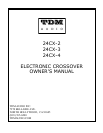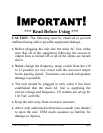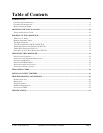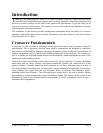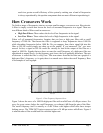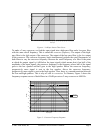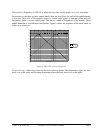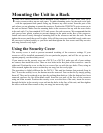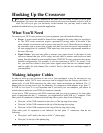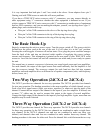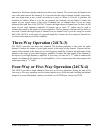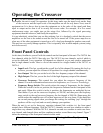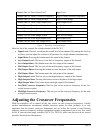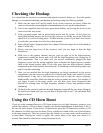
© 2003 TDM Audio, Inc. Electronic Crossover Owner’s Manual Page 5
Signal
Source
Power
Amplifier
Low Transducer
Mid Transducer High Transducer
Passive
Crossover
Figure 1 - Typical Passive Crossover Configuration
This kind of crossover is called a passive crossover because it does not use any power other than
the power contained in the signal to accomplish its task. Passive crossovers have certain
limitations that make them inappropriate for large systems, or systems requiring high fidelity at
high sound pressure levels. Some of these limitations are…
• Insertion Loss: Some power is lost in the crossover network which lowers the efficiency
of the system.
• Power Handling: Passive crossovers that can handle more than a few hundred watts
require very large, very costly components. This makes them impractical for high-power
systems.
• Fidelity: The nature of the way passive crossovers work makes it difficult to design them
with high fidelity in mind. The kinds of components used in passive crossovers tend to
color the sound in undesirable ways.
To get beyond these limitations, large systems, or medium sized systems that require high
fidelity incorporate active crossovers. TDM 24CX series crossovers are active crossovers. These
crossovers are not usually housed in the speaker cabinet. They are separate units that are usually
mounted in a rack with the power amplifiers. They are called active crossovers because they
require power in addition to their input signal to carry out their task. Active crossovers are
different from passive crossovers in many ways. Here are the key differences…
• Line Level Signals: Active crossovers work with the line level signal before it reaches
the power amplifier. This allows them to use smaller, better components and designs.



